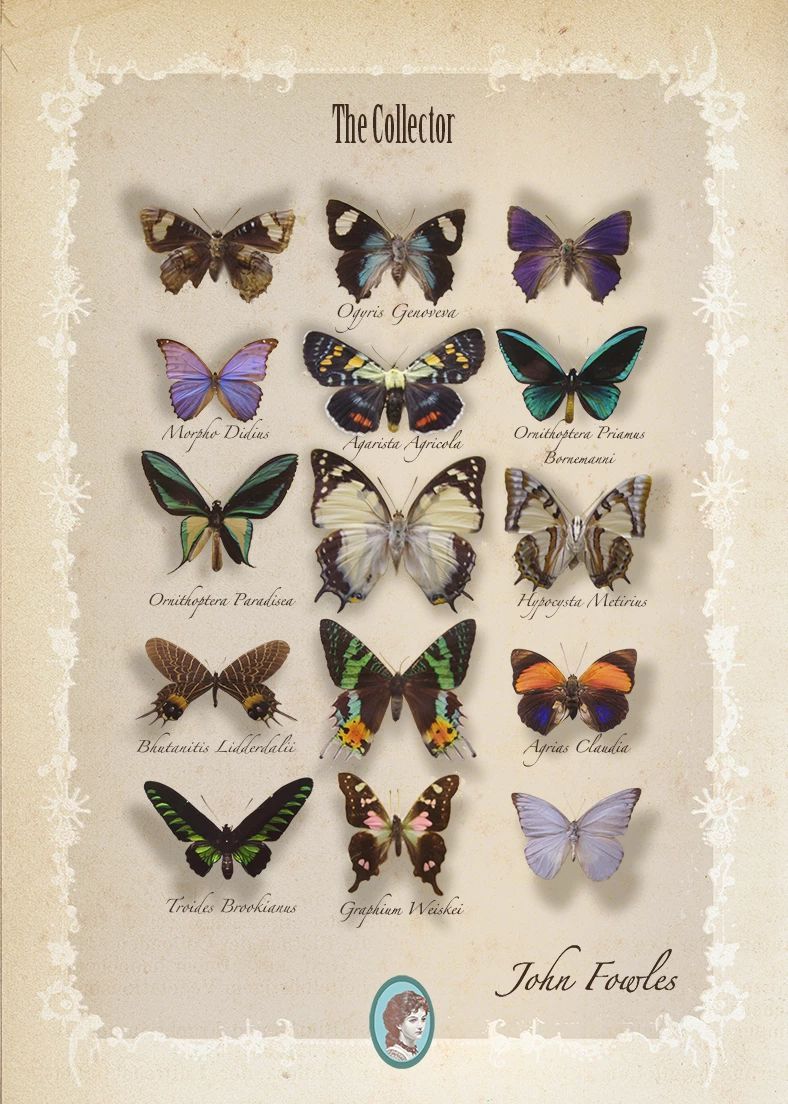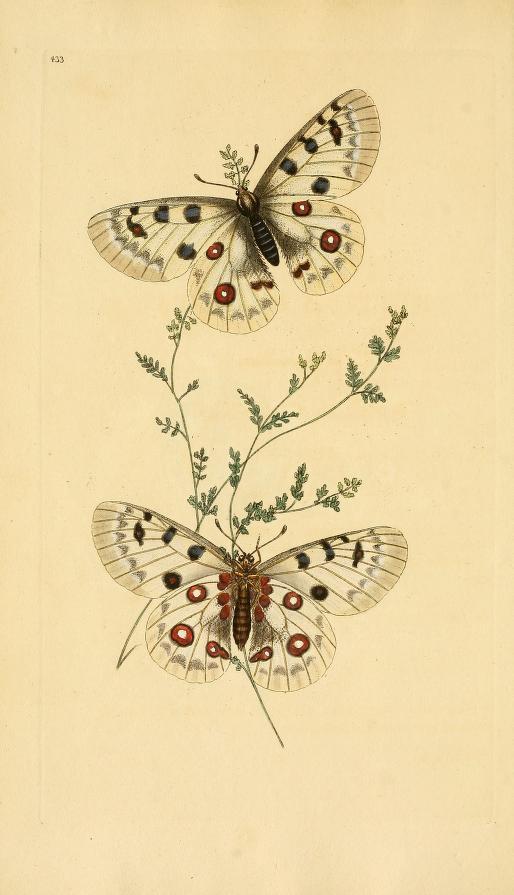I read quite a few interesting novels lately, but John Fowles’ debut novel “The Collector”, published in May 1963, is the most peculiar one; both the theme and the style in which it was written are fascinating. I discovered this novel by serendipity, completely randomly, but it turned out that this was exactly the kind of novel I craved. I was captivated from the very first page because from the very beginning Fowles places the reader into the mind of a seemingly ordinary, yet very unusual individual named Frederick Clegg. Frederick isn’t the Arnold Layne from Pink Floyd’s song, stealing and collecting girls knickers from the washing lines in suburban gardens of Cambridge, but he is a collector of other things; firstly the butterflies, and then one beautiful girl called Miranda he watches from afar and over time falls in love with, despite not knowing anything about her really, apart of the Art School she goes to and what she looks like. He is a socially awkward, strange individual and it’s hard to decide whether he is good or bad; the things he does are bad, but his intentions truly are not.
His early daydreams about her are very romantic and sweet, but concerning in their delusional nature: “I used to have daydreams about her, I used to think of stories where I met her, did things she admired, married her and all that. Nothing nasty, that was never until what I’ll explain later. She drew pictures and I looked after my collection (in my dreams). It was always she loving me and my collection, drawing and colouring them; working together in a beautiful modern house in a big room with one of those huge glass windows; meetings there of the Bug Section, where instead of saying almost nothing in case I made mistakes we were the popular host and hostess. She all pretty with her pale blonde hair and grey eyes and of course the other men all green round the gills.”
Other days the sweetness of these innocent daydreams takes a darker tone when he sees her spending time with other men, for he, naturally, wants her all for himself, even though Miranda doesn’t even know he exists: “The only times I didn’t have nice dreams about her being when I saw her with a certain young man, a loud noisy public-school type who had a sports car. Those were days I let myself have the bad dreams. She cried or usually knelt. Once I let myself dream I hit her across the face as I saw it done once by a chap in a telly play. Perhaps that was when it all started.”

Catherine Deneuve in UK filming 1965 British psychological horror Repulsion, London, Friday 2nd October 1964. Photo by Wilson
One day, Frederick wins a prize in the football pools and decides to buy a lonely and old countryside house. From that moment on, his daydreams and wild fantasies become serious plans; he decorates the cellar and is ready to catch his butterfly-victim Miranda. One evening he follows her after her classes: “It was all planned. And then she was near. She’d come up and round without me seeing, only twenty yards away, walking quickly. If it had been a clear night I don’t know what I’d have done. But there was this wind in the trees. Gusty. I could see there was no one behind her. Then she was right beside me, coming up the pavement. Funny, singing to herself.” After he kidnaps her, he drives her to his countryside house and locks her in the cellar. The novel is divided in three parts; the first part is seen from Frederick’s point of view, the second part is Miranda’s diary written in captivity, and a tiny bit at the end is again told from Frederick’s point of view.
Miranda’s emotions change greatly throughout the novel; at first she is frightened and thinks he must be interested only in sex, which isn’t true, but as she gets to know him, she realises just how pathetic, uneducated, uncultured and weak he truly is; a working class nobody, that is how she sees him, for she is a posh, middle-class art student. He doesn’t have a clue about art or Mozart; things that Miranda loves. Frederick also realises that Miranda is far from the girl of his dreams; she is insolent, she regularly mocks him for the way he walks and talks, decorates his house, nothing escapes her snobbish prejudice. And the most heartbreaking realisation comes in the end, when he realises that she never loved him. The realism gives this novel humanity; Frederick isn’t a cruel savage and a monster, but rather a lonely, confused, strange individual who simply wants to connect with another human being, and he tries doing that the only way he thinks it’s possible, as he says: “if she’s with me, she’ll see my good points, she’ll understand. There was always the idea she would understand.” Things aren’t always black and white and this novel shows the complexities of such a situation. Even though one would assume Miranda was a poor victim and Frederick the evil person, I grew fond of Frederick whilst reading the novel and I developed a sadness and understanding for him. I don’t think he has a cruel heart.

And now more quotes I enjoyed:
“That was the day I first gave myself the dream that came true. It began where she was being attacked by a man and I ran up and rescued her. Then somehow I was the man that attacked her, only I didn’t hurt her; I captured her and drove her off in the van to a remote house and there I kept her captive in a nice way. Gradually she came to know me and like me and the dream grew into the one about our living in a nice modern house, married, with kids and everything. It haunted me. It kept me awake at nights, it made me forget what I was doing during the day. I stayed on and on at the Cremorne. It stopped being a dream, it began to be what I pretended was really going to happen (of course, I thought it was only pretending) so I thought of ways and means — all the things I would have to arrange and think about and how I’d do it and all. I thought, I can’t ever get to know her in the ordinary way, but if she’s with me, she’ll see my good points, she’ll understand. There was always the idea she would understand.”

Apollo Butterfly, Illustrations taken from ‘The Natural History of British Butterflies’ by Edward Donovan, Printed for the author in 1792 and for F. and C. Rivington
“He’s so slow, so unimaginative, so lifeless. Like zinc white. I see it’s a sort of tyranny he has over me. He forces me to be changeable, to act. To show off. The hateful tyranny of weak people. The ordinary man is the curse of civilization. But he’s so ordinary that he’s extraordinary. He takes photographs. He wants to take a “portrait” of me. Then there were his butterflies, which I suppose were rather beautiful. Yes, rather beautifully arranged, with their poor little wings stretched out all at the same angle. And I felt for them, poor dead butterflies, my fellow-victims.”
“She’d taken her blue jumper off, she stood there in a dark green tartan dress, like a schoolgirl tunic, with a white blouse open at the throat. Her hair swept back into the pigtail. Her lovely face. She looked brave. I don’t know why, I thought of her sitting on my knees, very still, with me stroking her soft blonde hair, all out loose as I saw it after. Suddenly I said, I love you. It’s driven me mad. She said, “I see,” in a queer grave voice. She didn’t look at me any more then. I know it’s old-fashioned to say you love a woman, I never meant to do it then. In my dreams it was always we looked into each other’s eyes one day and then we kissed and nothing was said until after.”
“For some time she sat smoking, with her eyes shut, as if the sight of me tired her eyes.”

High Brown Fritillary, Illustrations taken from ‘The Natural History of British Butterflies’ by Edward Donovan, Printed for the author in 1792 and for F. and C. Rivington
The author explained the inspiration behind the novel in his journal entry for 3rd February 1963:
“The Collector. The three sources. One. My lifelong fantasy of imprisoning a girl underground. I think I must go back to early in my teens. I remember it used to be famous people Princess Margaret, various film stars. Of course, there was a sexual motive; the love-through-knowledge motive, or motif, has also been constant. The imprisoning in other words, has always been a forcing of my personality as well as my penis on the girl concerned. Variations I can recall: the harem (several girls in one room, or in a row of rooms); the threat (this involves sharing a whip, but usually not flagellation—the idea of exerted tyranny, entering as executioner); the fellow-prisoner (this by far the commonest variation: the girl is captured and put naked into the underground room; I then have myself put in it, as if I am a fellow-prisoner, and so avoid her hostility). Another common sexual fantasy is the selection board: I am given six hundred girls to choose fifty from and so on. These fantasies have long been exteriorized in my mind, of course; certainly I use the underground-room one far less since The Collector.
Two, the air-raid shelter incident.
Three, Bartok’s Bluebeard’s Castle.“




What I find is strange is that in some of these thankfully rare real live situations the woman can actually fall in love with the perpetrator, but he is so deranged he can’t accept it. Maybe its some sort of release from the mental and sexual abuse?
LikeLike
Hmmm, yes it is a psychologically complex issue. Maybe the man can never be fully sure whether the woman truly fell in love with him, or whether she is pretending or she’s just being grateful that she wasn’t killed. The guy in the book knew very well that Miranda would never be with him if he let her go, so he was skeptical at her advances and flirting, I guess he senses it wasn’t sincere.
LikeLiked by 1 person
It’s been so long since I read that. Thanks for the reminder and for Fowles’s own discussion of his inspiration. I recall loving his Magus and The French Lieutenant’s Woman as well. I believe I am going to read some of his other novels now. Thanks for being a catalyst.
LikeLiked by 1 person
Thank you for reading and commenting! I would love to read more of Fowles, I am really impressed with the writing. And also, reading his inspiration for the novel made me think how dark fantasies can be turned into art, channeled into something good and not going out into the world and doing something bad.
LikeLiked by 1 person
That is absolutely so. I have been making music and art my entire life. An exorcism-like event comes into play perhaps 10 – 20% of the time. Art is alchemical.
LikeLiked by 2 people